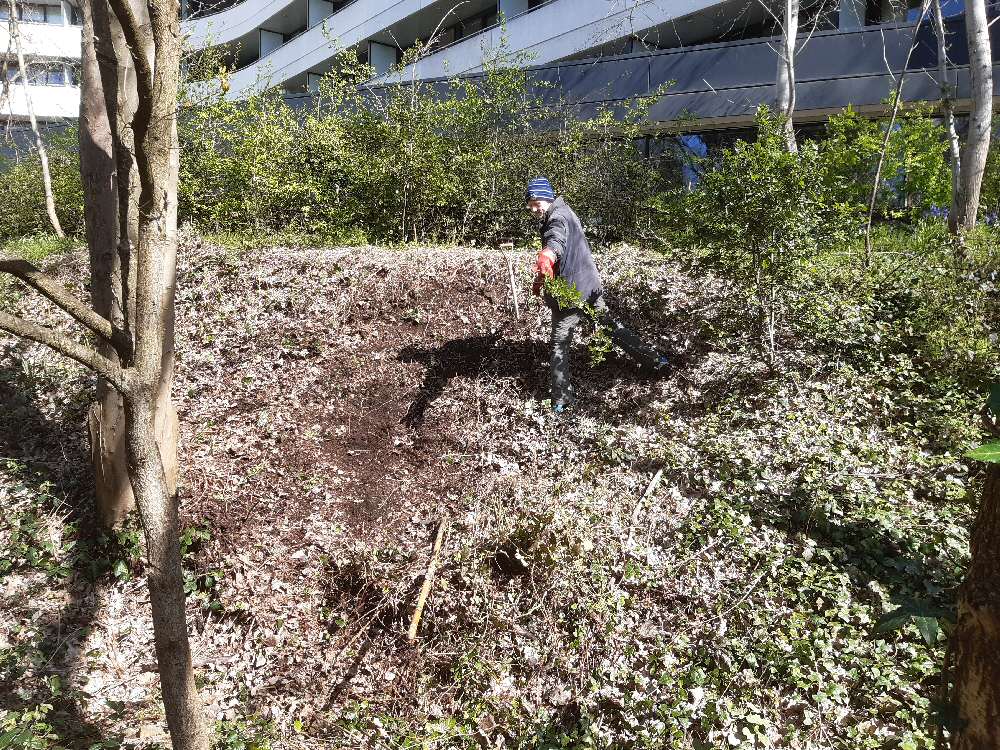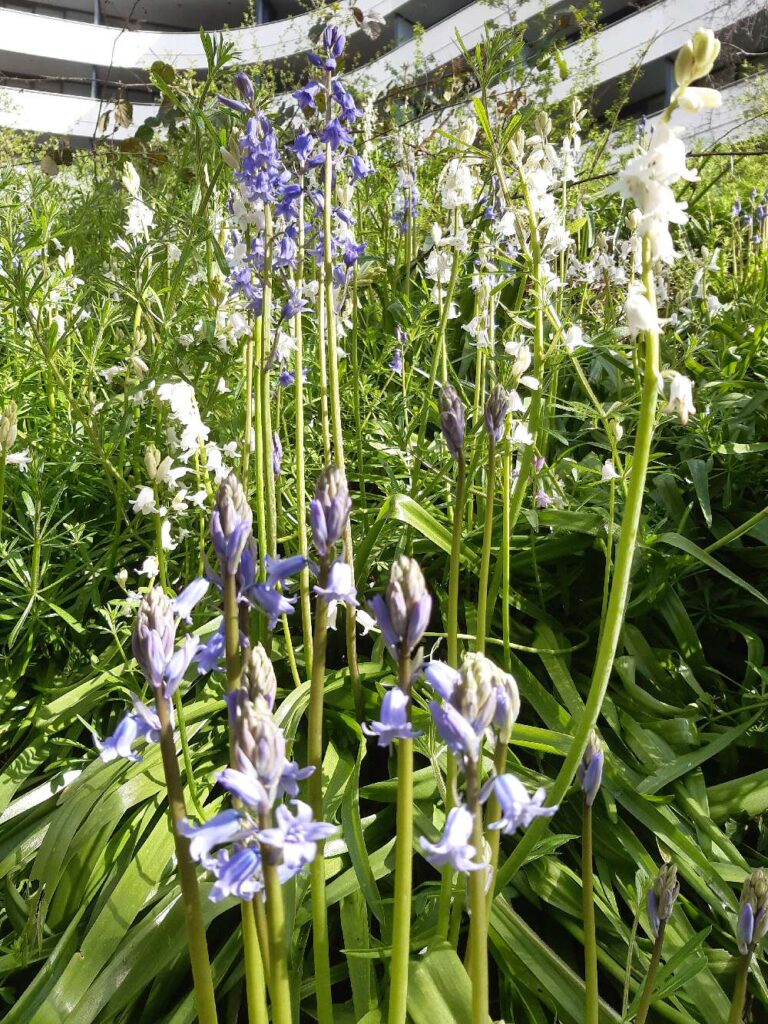
For many years, we – London Wildlife Trust and its volunteers – have mainly tried to keep Gunnersbury Triangle open and usable: the paths not blocked by fallen trees or too tightly hemmed in by encroaching brambles, edged variously with low fences, deadhedges, a ditch or two. lines of loggery posts to nudge people to stay on the path while giving the stag beetle larvae a bit of habitat, or failing all else just long heavy logs laid on the ground end to end.
Apart from that, we’ve done what we can to stop the meadows vanishing under bramble, repaired or replaced benches and boardwalks, and left the rest of the reserve more or less to its own devices.
That has meant that much of the reserve has been heavily wooded, with a rather dense canopy, a shaded woodland floor, and a mass of ivy and bramble that has got pretty much everywhere. That’s a class 3 or degraded woodland, where the ideal is a pretty and species-diverse floral ground cover – a bluebell wood, say, or dog’s mercury, or any of the flowers adapted to pop up in spring before the deciduous trees that form the canopy come into leaf and cut out the light to the smaller plants beneath them.
Well, at last we’ve started to have a go at habitat restoration. The areas most suitable for the effort are those where the tree canopy is thinnest, so forest floor herbs have a decent amount of light throughout the summer. The north bank is clearly an ideal choice here, as it’s south-facing and in many places relatively open; it’s also less likely to be trodden down because of its steepness. If it has a disadvantage it may be that it’s very free-draining, and may get dry quickly in a hot summer.
Be that as it may, we’ve now spent a couple of sessions digging out brambles, clearing dead wood, and pulling the ivy from the ground. A heavy metal rake makes quick if tiring work of removing the ivy. With all the rain we’ve had recently, all but the biggest brambles come out satisfyingly and permanently by the roots when pulled, which they certainly don’t in a dry period.
In the photo above, you can see an uncleared bit of woodland floor on the right, and a cleared area on the left. We managed to clear a 30-foot length of the north bank in one session today. Maybe we’ll get all the way up to the rather fine bluebell patch next time.

